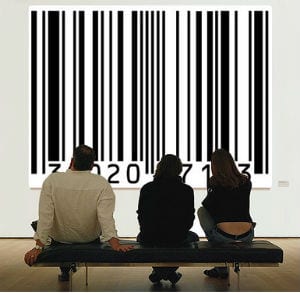 With the advent and, now, near-ubiquity of QR codes and RFID tagging in warehousing and operations, it’s easy to forget the significance of the modest UPC bar code.
With the advent and, now, near-ubiquity of QR codes and RFID tagging in warehousing and operations, it’s easy to forget the significance of the modest UPC bar code.
The New York Times, in an compelling obituary for Joseph Woodland — the inventor of the bar code, who died at 91 on Dec. 11 — estimated that bar codes are scanned 5 billion times every day. Yet Woodland, who patented the technology 60 years ago (as the “Classifying Apparatus and Method”), only ever made $15,000 off his invention.
The codes, which are made of lines of different widths, are meant to simulate the dots and dashes of Morse Code. Woodland apparently came up with the idea while raking his fingers through the sand on the beach: “I poked my four fingers into the sand and for whatever reason — I didn’t know — I pulled my hand toward me and drew four lines,” he told Smithsonian Magazine in 1999. “I said, ‘Golly! Now I have four lines, and they could be wide lines and narrow lines instead of dots and dashes.”
The original prototype was bulls-eye-shaped, but early printers had trouble with bleeding ink on those circular designs. Thus, the rectangular UPC we know so well was born.
However laser-optics technology was well behind the idea for the UPC — it wasn’t until the early ’70s, 20 years later, that the UPC started showing up in grocery stores.
According to an obit in Wired Magazine, “IBM’s scanning system — the IBM 3660 — officially arrived in 1973, offering not only scanners and terminals but a kind of early local area network for connecting them all to a central controller, and the likes of RCA and NCR produced scanners of their own.”
In the world of field service — where parts, inventory, and warehousing play such a crucial (and sometimes frustrating) part of daily life — the ability to encode data directly on to a product or piece of equipment has drastically changed the way people work. It’s worth considering the next time you zap a bar-code.
More: What Newer, Smarter RFID Can Do for Field Service.
Click here to download a free whitepaper, “Five Steps to Make Field Service Profitable.”

Share this: